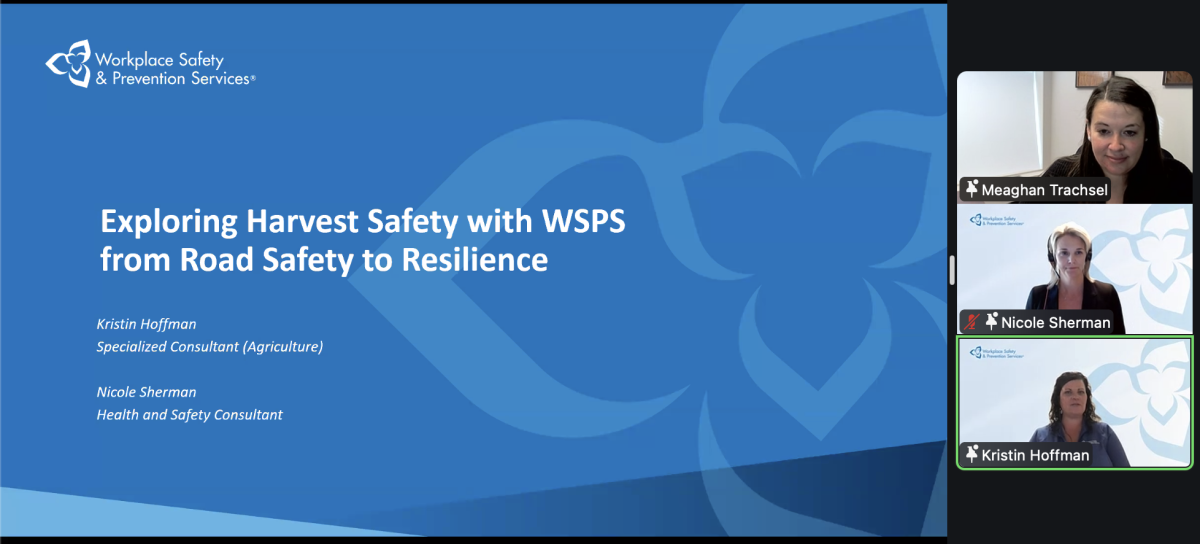The Bank of Canada’s commodity price index (BCPI), used to gauge the country’s economic performance, has been retooled to add potatoes to the list of commodities it tracks.
But while potatoes are added to an ag commodity basket that already includes cattle, hogs, wheat, barley, canola and corn, the revised index also lightens the agriculture basket’s weight against crude oil, natural gas, metals/minerals, forestry and fisheries.
To produce a “more accurate, representative and flexible index,” the nation’s central bank said Friday, it changed the methodology it uses to build the BCPI.
Read Also

Exploring Harvest Safety
Kristin Hoffman of WSPS explains measures for increased farm safety around harvest season
“Instead of using a fixed-weight price index in which the weights are updated only infrequently, the new BCPI uses a chain Fisher price index with weights updated on an annual basis,” the Ottawa-based BoC said.
The new Fisher BCPI is a weighted index of U.S.-dollar prices of 24 commodities that are produced in Canada and sold in world markets.
The previous fixed-weight index hadn’t been updated since 2003, when a number of commodities were dumped, as they had represented a “small fraction” of total commodity production in Canada from 1988 to 1999.
The now-discarded fixed-weight index was “less than ideal for making comparisons with previous commodity price cycles, since the commodities included… represent the representative mix of outputs only for the period from 1988 to 1999,” the BoC said in a discussion paper.
The 2003 fixed-weight BCPI had the total agriculture basket at a production weight of 16 per cent, ranked equal in weight to metals/minerals and below forestry (33 per cent) and crude oil (21 per cent).
If the Fisher BCPI had been in place previously, agricultural commodities’ share would have dropped from 25 per cent in 1978 to 17 per cent in 1988, 19 per cent in 1998 and the nine per cent level where it’ll rest for the 2010 fiscal year.
A nine per cent weight leaves the ag basket only above fisheries at one per cent, compared to 33 per cent for crude oil, 26 per cent for natural gas, metals/minerals at 16 per cent (now including lead and iron) and forestry at 14 per cent.
The Fisher BCPI also regroups the fisheries basket into just two categories: ocean fish (cod, salmon, haddock, pollock et cetera) and shellfish (lobsters, crabs, clams, shrimp et cetera).
Emerging markets
Potato commodity data will be sourced from the U.S. Bureau of Labor Statistics’ producer price statistics. Cattle and hog prices are based on USDA data, in US$ per hundredweight.
Wheat, meanwhile, is to be based on U.S. No. 1 spring wheat at 14 per cent protein; barley, on No. 1 CW at Thunder Bay; canola on No. 1 Canada prices, in store Vancouver; and corn on No. 2 hard U.S. corn, all measured in US$ per bushel.
Ag commodities, when tracked, show “little upward movement” between the late 1970s and early 2000s.
However, the BoC said, ag commodity prices rose “sharply” in the mid-2000s, through to 2008, “again reflecting the increase in demand from emerging-market economies for a broad range of ag products.
“In fact, the period from 1998 to 2008 marks the longest improvement in agricultural prices over the history of the index,” BoC wrote.
The BoC notes that some commodities, such as corn, are included in the Fisher BCPI as part of the bank’s effort to measure the effect of commodity price movements on “particular regions, rather than on the country as a whole.”
Where the fixed-weight BCPI included at least one commodity that represented “an important share of output for most provinces and territories,” the Fisher BCPI includes potato production as the commodity “is important for Prince Edward Island.”
P.E.I. remains Canada’s largest potato grower in terms of seeded acres, ahead of Manitoba, New Brunswick, Alberta and Quebec respectively in StatsCan’s midsummer acreage estimates in 2009.
















